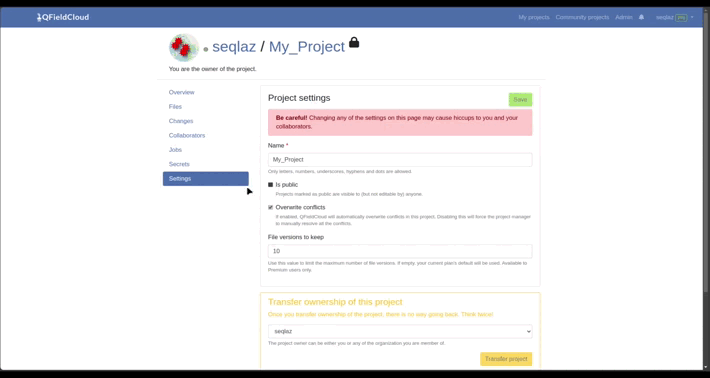Gerir Conflitos
Understanding Conflicts in Data Synchronization¶
Conflicts occur when any of these conditions is met:
1) distinct users set the same attribute on the same feature to different values; 2) a primary key is employed twice. While highly unlikely have conflicts, preventing, mitigating and resolving conflicts is important to maintain data integrity in a healthy QGIS project. Here are some tips and tricks to do just that.
How to Avoid Conflicts?¶
- Unique "fid" Serial Numbers:
- When creating a feature, it is recommended to assign a unique "fid" serial number to each feature in the layers.
-
Use the expression "epoch(now())" (without the double quote) in the "fid" to generate a unique identifier per millisecond, reducing the possibility of duplicate "fid" numbers.
-
Planeamento e Designação:
- For updating existing features based on field conditions, plan and designate the features each user will update.
- Users should avoid changing the "fid" or identifier numbers.
Como Resolver Conflitos?¶
-
By default, QFieldCloud overwrites conflicts using a last wins policy (the latest patch of changes to the attribute(s) involved in the conflict replaces all earlier patches of changes to these attributes). Alternatively, admins can set a project's conflict resolution policy to manual. Doing so will require the project manager to manually resolve conflicts, picking those to be applied to the project.
-
Quando lidar com conflitos:
- Navegue até a seção "Alterações".
- Filter the changes with the "Not_applied" status.
- For each conflicted change, select it and set the status to "Re-apply" from the "Action" dropdown menu, alternatively if all the new changes are in conflict you can choose in the last conflicted change and select "Re-apply this and newer changes".
- Check the details of changes in the conflict and click "Save All" at the end of the page.
- Refer to our official documentation Delta apply for additional information.
